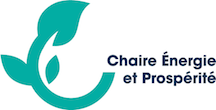This paper analyses the drivers of French transport CO2 emissions over the period 1960-2017. This period has experienced a large growth in transport CO2 emissions from 32 to 125 MtCO2, after a peak at 135 MtCO2 in the early 2000s. A decomposition analysis is used to evaluate the relative contribution of five key drivers of passenger and freight transports emissions: transport demand, modal shift, vehicle load factor, energy efficiency and carbon intensity of the energy. It highlights the strong relation between CO2 emissions and transport demand, while the four other factors have compensated: modal shift towards road transport and the decrease of the car load factor have participated in the increase of CO2 emissions, whereas the increasing load factor of road freight transport, energy efficiency and the slight carbon intensity improvement have balanced these negative effects. The impact of public policies on emissions appears to be quite limited for now.
Découvrez en ligne la dernière newsletter et inscrivez vous pour recevoir la prochaine
La crise climatique est source de risques financiers désormais reconnus comme porteurs d’incertitudes multiples, et susceptibles de détériorer l’équilibre du système comme celui de ses acteurs. Ce séminaire sera l’occasion d’aborder plusieurs questions stratégiques soulevées par les risques climatiques tant pour les banques que pour les autorités de tutelle.


